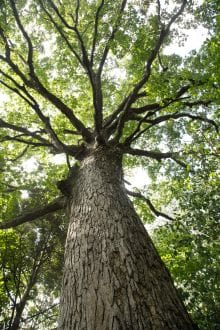RSS feed source: National Science Foundation
A group of researchers from the University of Kentucky, The University of Tennessee and Indiana University, including those supported by the U.S. National Science Foundation, have collaborated with scientists from the U.S. Forest Service and others to produce the first complete genome for the white oak (Quercus alba), a tree that provides large amounts of timber and is the primary species used in barrels for aging spirits.
RSS feed source: National Science Foundation
Researchers have expanded the potential of carbon capture technology that plucks CO2 directly from the air by demonstrating that there are multiple suitable and abundant materials that can facilitate direct air capture. Researchers present new, lower-cost materials to facilitate moisture-swing to catch and then release CO2 depending on the local air’s moisture content, calling it ‘one of the most promising approaches for CO2 capture.’
Click this link to continue reading the article on the source website.
RSS feed source: National Science Foundation
In-depth analysis
April 3, 2025
Data source: U.S. Energy Information Administration, Short-Term Energy Outlook (STEO), March 2025
Note: Earlier scenario assumes start-up dates two-to-five months earlier than announced by project developers; Later scenario assumes start-up dates six months later than announced by project developers.
U.S. exports of liquefied natural gas (LNG) represent the largest source of natural gas demand growth in our March 2025 Short-Term Energy Outlook (STEO), with LNG gross exports expected to increase by 19% to 14.2 billion cubic feet per day (Bcf/d) in 2025 and by 15% to 16.4 Bcf/d in 2026. The start-up timing of two new LNG export facilities—Plaquemines LNG Phase 2 (consisting of 18 midscale trains) and Golden Pass LNG—could significantly affect our forecast because these facilities represent 19% of incremental U.S. LNG export capacity in 2025–26.
To illustrate the
Click this link to continue reading the article on the source website.
RSS feed source: National Science Foundation
When we move, it’s harder for existing wearable devices to accurately track our heart activity. But researchers found that a starfish’s five-arm shape helps solve this problem. Inspired by how a starfish flips itself over — shrinking one of its arms and using the others in a coordinated motion to right itself — scientists have created a starfish-shaped wearable device that tracks heart health in real time.
Click this link to continue reading the article on the source website.

